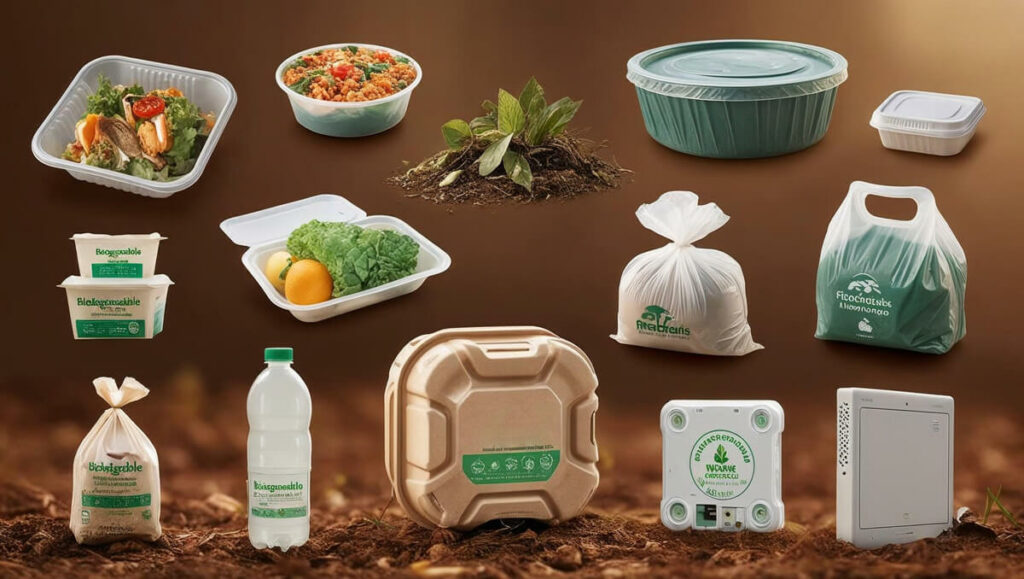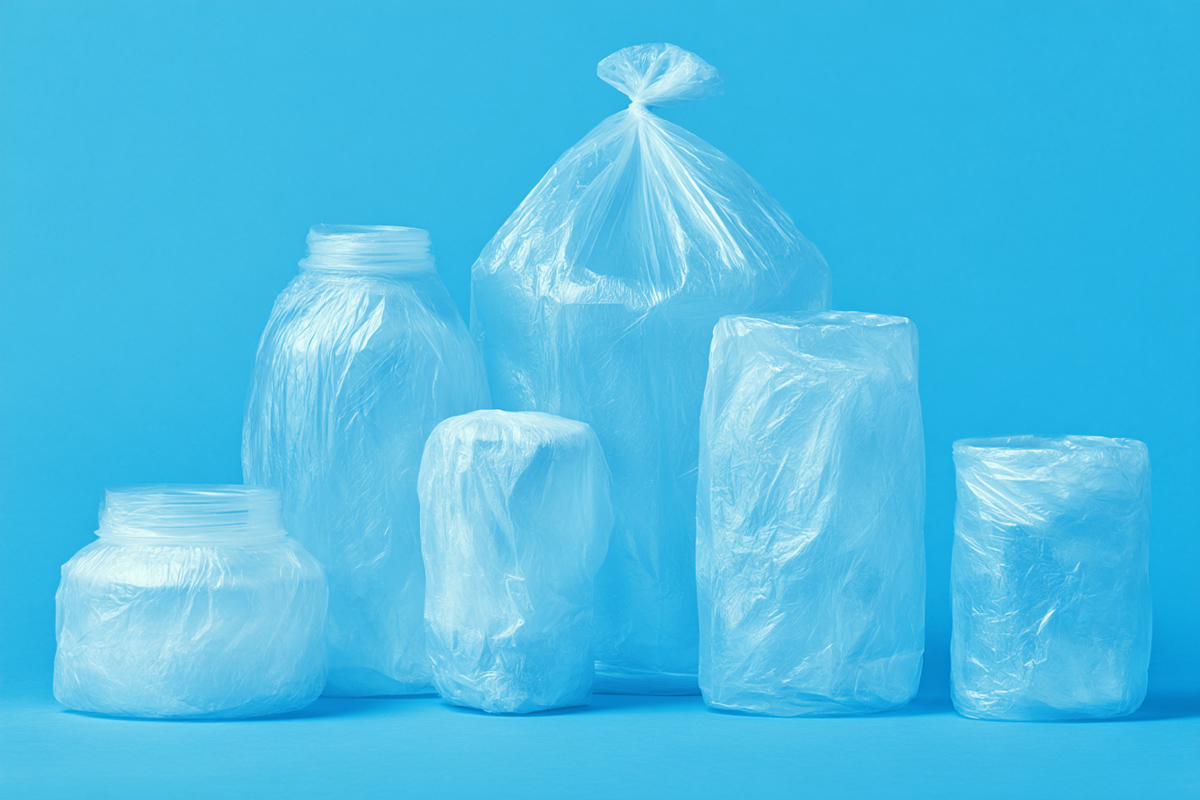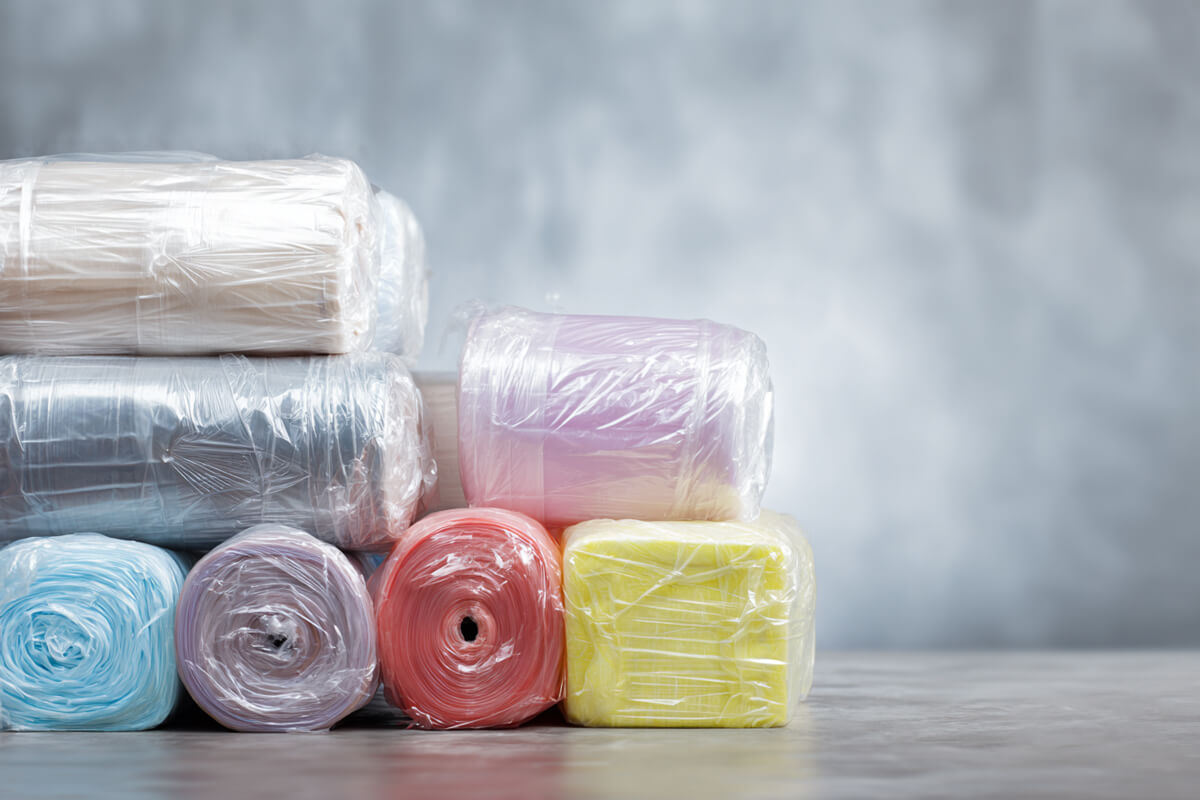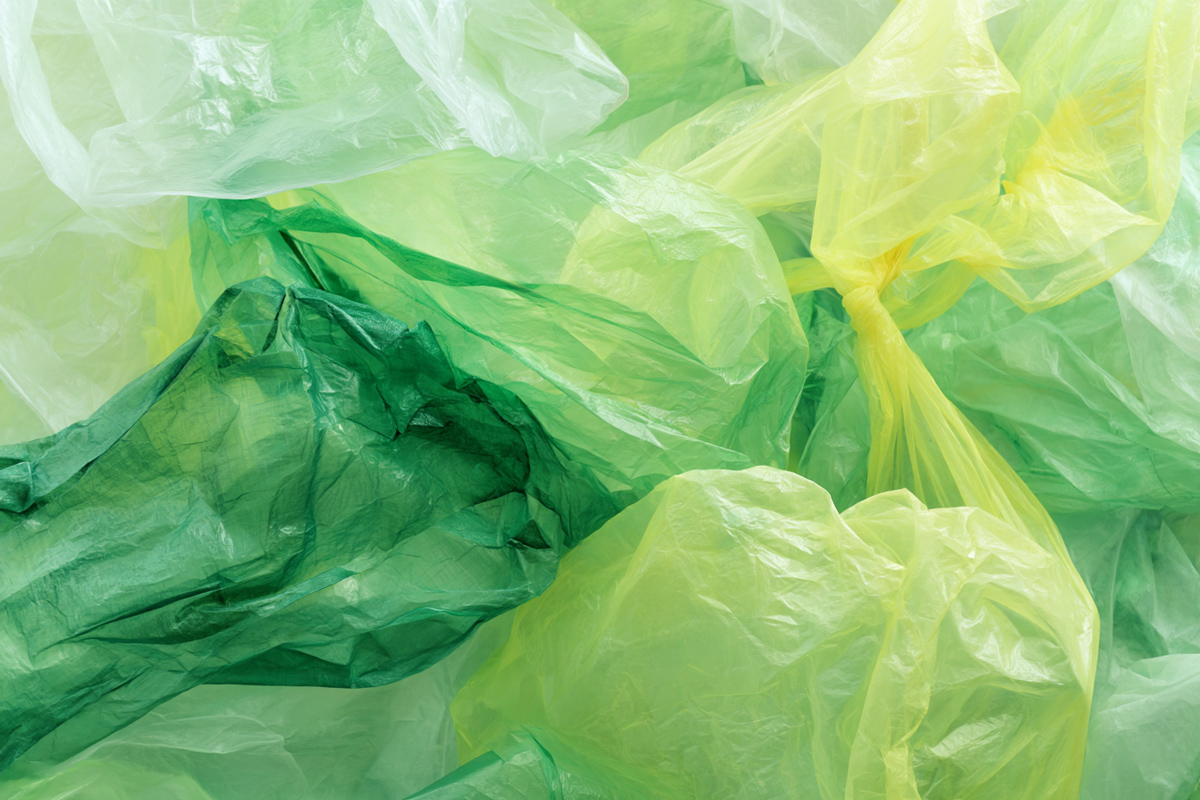Biodegradable packaging is designed to break down naturally over time, leaving minimal or no harmful residues behind. It does this through processes involving microorganisms like bacteria and fungi. Unlike conventional plastic packaging that can take centuries to decompose, biodegradable packaging breaks down within a shorter timeframe.
With growing concerns about plastic pollution and the impact of waste on the environment, finding sustainable alternatives has become more important than ever. This is where biodegradable packaging comes in. It offers a way to reduce the environmental footprint of packaging materials, especially in industries that rely heavily on plastic.
There’s often confusion between biodegradable and compostable packaging. While both are designed to break down, compostable packaging also enriches the soil after decomposition. In contrast, biodegradable packaging might not add nutrients back to the environment.
Since plastic packaging is a significant concern, it’s important to understand how biodegradable plastic packaging works and how it can help reduce waste.
Table of contents:
- How does biodegradable packaging work?
- Types of biodegradable packaging materials
- Applications of biodegradable plastic packaging
- Challenges and limitations of biodegradable plastic packaging
How does biodegradable packaging work?
Biodegradable packaging breaks down naturally through the action of microorganisms like bacteria, fungi, or algae. These organisms feed on the materials, breaking them down into natural elements such as carbon dioxide, water, and biomass. This process typically happens when the packaging is exposed to conditions that support microbial activity, like moisture, heat, and oxygen.
One of the main reasons biodegradable packaging decomposes faster than conventional plastic is its molecular structure. Biodegradable materials are designed with weaker polymer chains. These chains are easier for microorganisms to break down compared to the strong, durable chains found in conventional plastics. For example, while conventional plastic can take hundreds of years to decompose, biodegradable packaging can break down within months or a few years, depending on the conditions.
You might assume that biodegradable packaging is always made from plant-based materials, but that’s not necessarily true. Both bio-based and fossil-based polymers can be biodegradable. For instance, PLA (Polylactic Acid) is made from renewable resources like corn starch, while PBAT (Polybutylene Adipate Terephthalate) is a fossil-based polymer that still decomposes relatively quickly. The key factor is not the origin of the material but the structure of its polymer chains.
The rate of decomposition can vary. Some biodegradable plastics need specific conditions, like industrial composting facilities, where higher temperatures and controlled environments speed up the breakdown process. On the other hand, some materials are designed to decompose in natural settings, like soil or water.
Types of biodegradable packaging materials
There are several types of biodegradable packaging materials, each with unique properties and uses. Now, we will focus on the main types, particularly those used in plastic packaging.
Biodegradable plastics
- PLA (Polylactic Acid). Made from renewable resources like corn starch or sugarcane, PLA is commonly used for packaging films, containers, and compostable bags. It offers good transparency and strength, making it suitable for food packaging. However, it usually requires industrial composting conditions to break down efficiently.
- PBAT (Polybutylene Adipate Terephthalate). A fossil-based polymer that decomposes relatively quickly compared to conventional plastics. PBAT is flexible and often blended with other biodegradable materials to improve durability. It is suitable for applications like compostable bags.
- Starch-Based Plastics. Derived from sources like corn, potato, or wheat starch. These plastics break down relatively quickly when exposed to moisture and microbial activity. They are commonly used for loose-fill packaging and biodegradable films.
Natural-based materials
- Cellulose. Made from plant fibres, cellulose-based films are biodegradable and compostable. They provide good barrier properties, which makes them suitable for food wraps and coated papers.
- Seaweed. Used to create flexible, biodegradable films. Seaweed packaging is lightweight and breaks down within a few weeks when composted. However, it lacks the durability needed for long-term packaging.
- Mushroom packaging. Made from agricultural waste bound by mycelium (mushroom roots). It is strong and can replace traditional polystyrene in cushioning applications. It decomposes within weeks when composted.
- Paper and cardboard. Widely used and easily decomposable, paper and cardboard are often coated with biodegradable polymers to improve moisture resistance.
Comparison Table: Pros, Cons, and Uses
| Material | Pros | Cons | Typical Uses |
| PLA | Renewable, compostable | Needs industrial composting | Food containers, films |
| PBAT | Flexible, breaks down faster than PE | Fossil-based, requires specific conditions | Compostable bags, packaging films |
| Starch-Based | Fast decomposition, plant-based | Limited durability, moisture-sensitive | Loose-fill, compostable films |
| Cellulose | Natural, good barrier properties | Prone to discolouration, limited shelf life | Food wraps, paper coatings |
| Seaweed | Biodegrades in weeks, lightweight | Not durable enough for heavy packaging | Food wraps, single-use items |
| Mushroom | Strong, natural, compostable | Limited scalability, not waterproof | Protective packaging |
Special focus on biodegradable plastic
Biodegradable plastic packaging is often seen as a sustainable alternative to conventional plastics. While it can offer similar durability and flexibility, it decomposes much faster when exposed to the right conditions. However, not all biodegradable plastics are suitable for every use. It is important to match the material to the packaging needs and disposal methods.

Applications of biodegradable plastic packaging
Biodegradable plastic packaging is used in various industries due to its ability to decompose more quickly than conventional plastics. Here are the most common applications and why they are preferred:
Food packaging
Biodegradable plastics are commonly used for food packaging because they offer good barrier properties while reducing environmental impact. Some typical uses include:
- Compostable bags. Used for fresh produce, bakery items, and takeaways. These bags break down into non-toxic elements, reducing landfill waste.
- Containers and trays. PLA-based containers are popular for serving salads and cold foods. They offer transparency and rigidity, similar to conventional plastic.
- Films and Wraps. Starch-based or cellulose films are used for wrapping perishable items. They help preserve freshness while being compostable.
- Challenges. Some biodegradable food packaging requires industrial composting to break down, and not all facilities can process it.
Retail and consumer goods
Many businesses are opting for biodegradable plastic packaging to reduce their carbon footprint and appeal to environmentally conscious consumers. Examples include:
- Shopping bags. Made from PLA or PBAT, these bags break down faster than traditional plastic bags, especially when composted.
- Protective wrapping. Used for delicate items like cosmetics or electronics. Starch-based foams or cellulose wraps are popular options.
- Disposable utensils. PLA-based cutlery is biodegradable and often used in food service.
Industrial applications
Industries that require bulk packaging or protective solutions are also adopting biodegradable options. Common uses include:
- Loose-fill packaging. Made from starch or other natural polymers, these packing peanuts decompose when exposed to moisture.
- Cushioning materials. Mushroom-based packaging is used for protecting fragile goods during transport. It’s an eco-friendly alternative to polystyrene.
- Agricultural applications. Biodegradable mulch films can reduce plastic waste in farming, decomposing directly into the soil after use.
Why use biodegradable plastic packaging?
The primary reason for using biodegradable plastic packaging is to reduce the long-term environmental impact. Since these materials break down naturally, they help minimise landfill waste and lower carbon emissions. Additionally, using biodegradable options can improve a company’s image by aligning with consumer expectations for sustainability.
Biodegradable plastic packaging is particularly beneficial in sectors where short-term use is common, such as food service and retail. Choosing the right type of biodegradable material is essential to ensure that it meets the packaging requirements while also being compatible with local waste management practices.
Challenges and limitations of biodegradable plastic packaging
While biodegradable plastic packaging offers several environmental benefits, it also comes with challenges that you need to consider. Understanding these limitations will help you make more informed decisions about using biodegradable packaging.
Decomposition conditions
One of the most significant challenges is that not all biodegradable plastics break down in natural environments. Some require specific conditions, such as industrial composting facilities. These facilities maintain higher temperatures and controlled environments that speed up decomposition.
- Example: PLA, a common biodegradable plastic, often needs temperatures above 60°C to break down effectively. Without these conditions, it may not decompose as intended.
- Problem – if biodegradable packaging ends up in regular landfill sites or natural environments, it might not degrade as expected, leading to long-lasting waste.
Cost considerations
Biodegradable plastics can be more expensive to produce compared to conventional plastics. This higher cost can affect pricing and profitability, especially for businesses that need large volumes of packaging.
- Reason – the production processes often involve renewable raw materials or advanced technology, which can increase manufacturing costs.
- Impact – while demand for sustainable packaging is growing, some businesses may still find the cost prohibitive, particularly small companies with limited budgets.
Performance trade-offs
Biodegradable plastic packaging may not always perform as well as conventional plastics, especially in terms of durability and moisture resistance.
- Durability issues: Some biodegradable plastics are less resistant to heat or moisture, which can limit their use in certain applications, like hot food containers.
- Barrier Properties: Compared to traditional plastic, biodegradable options may offer weaker protection against oxygen or moisture, affecting product shelf life.
- Example: Starch-based plastics may absorb moisture, causing them to weaken or break down prematurely.
Misleading labels and greenwashing
Not all packaging labelled as “biodegradable” truly breaks down in the environment. Some products claim biodegradability without specifying the conditions required for decomposition.
- Certification importance. Look for certified compostable or biodegradable labels that meet recognised standards, such as EN 13432 in Europe.
- Consumer confusion. Misleading claims can damage brand reputation and lead to incorrect disposal practices.
Lack of recycling compatibility
In some cases, biodegradable plastics are not compatible with conventional recycling systems. Mixing biodegradable plastics with regular plastics during recycling can contaminate the batch and reduce the quality of recycled materials.
- Solution: Clear labelling and consumer education are crucial to ensure that biodegradable plastics are disposed of correctly.
Final word
Choosing biodegradable plastic packaging is a practical step towards reducing environmental impact. While it’s important to be aware of the challenges, such as decomposition conditions and costs, the benefits often outweigh the drawbacks, especially when using innovative materials.
If you are looking for a sustainable packaging solution, consider Polyair™ – our new bio-based, carbon-neutral product. Recently launched in the UK, Polyair™ is the only 100% recyclable, carbon-neutral material currently available. It is designed to meet the growing demand for eco-friendly packaging without compromising performance or commercial viability.Polyair™ is especially suitable for various applications like pallet covers, top sheets, and bags. Unlike older oxy-degradable options, which break down into harmful particles, Polyair™ maintains its integrity while being fully recyclable.




